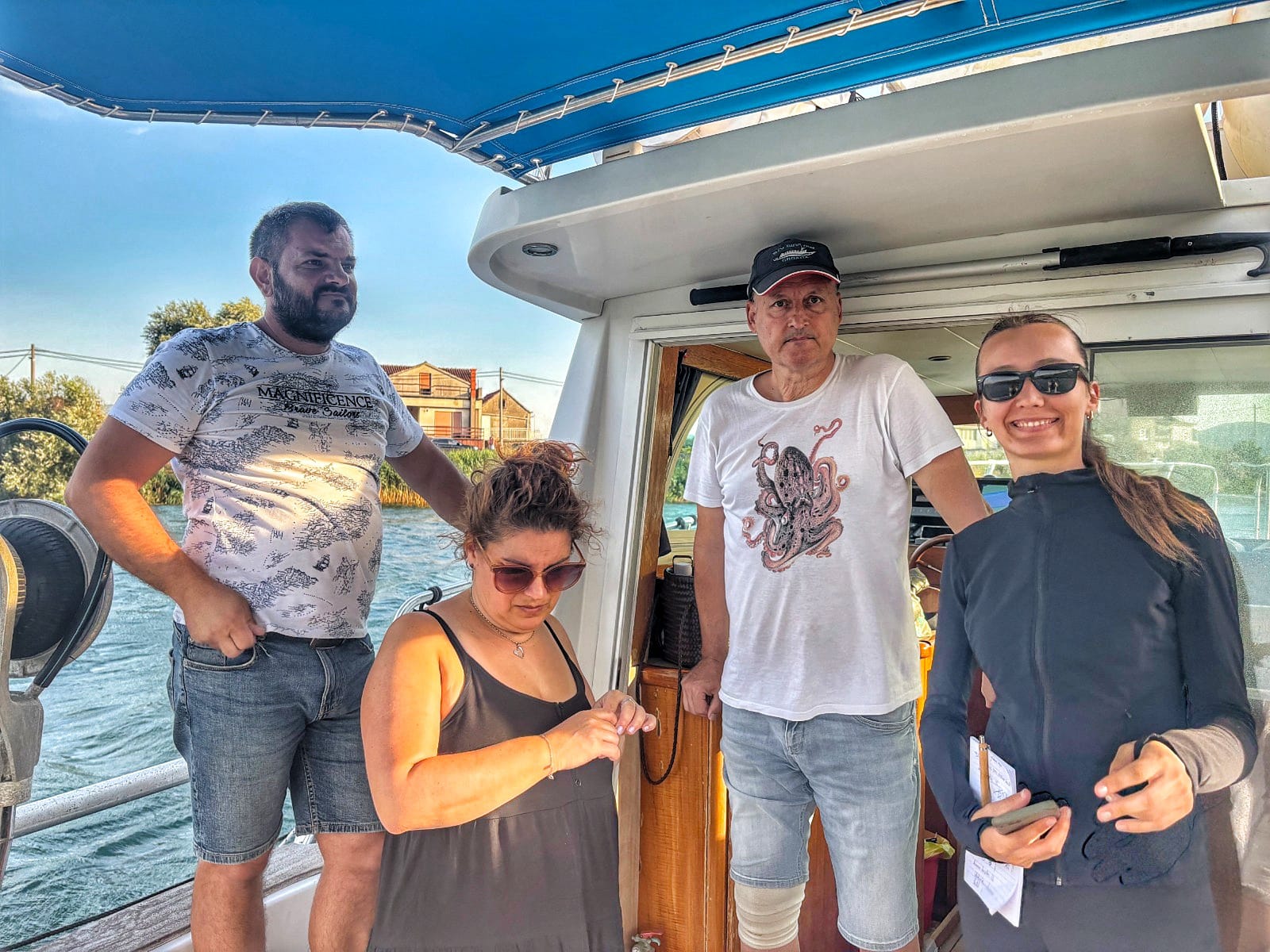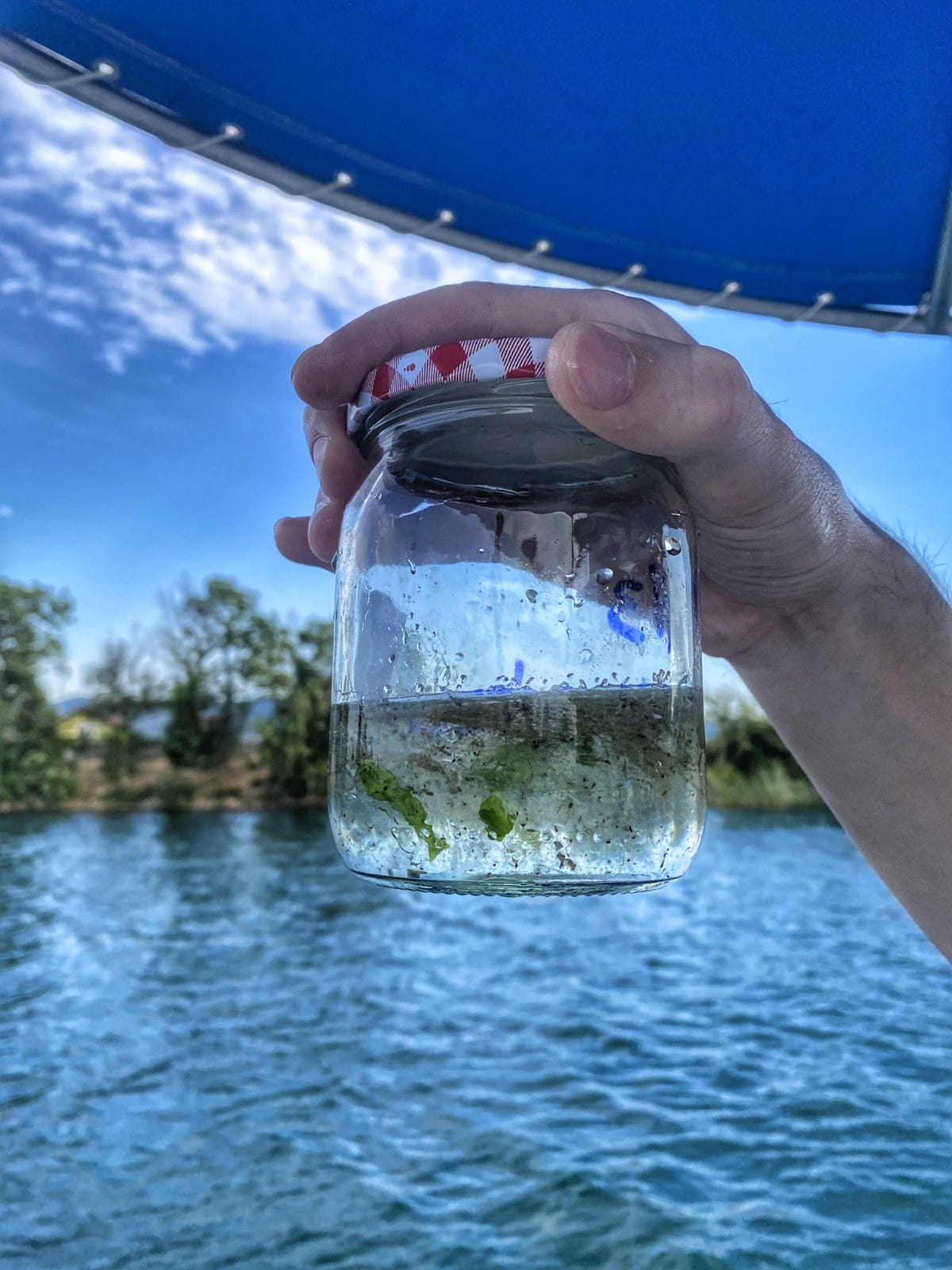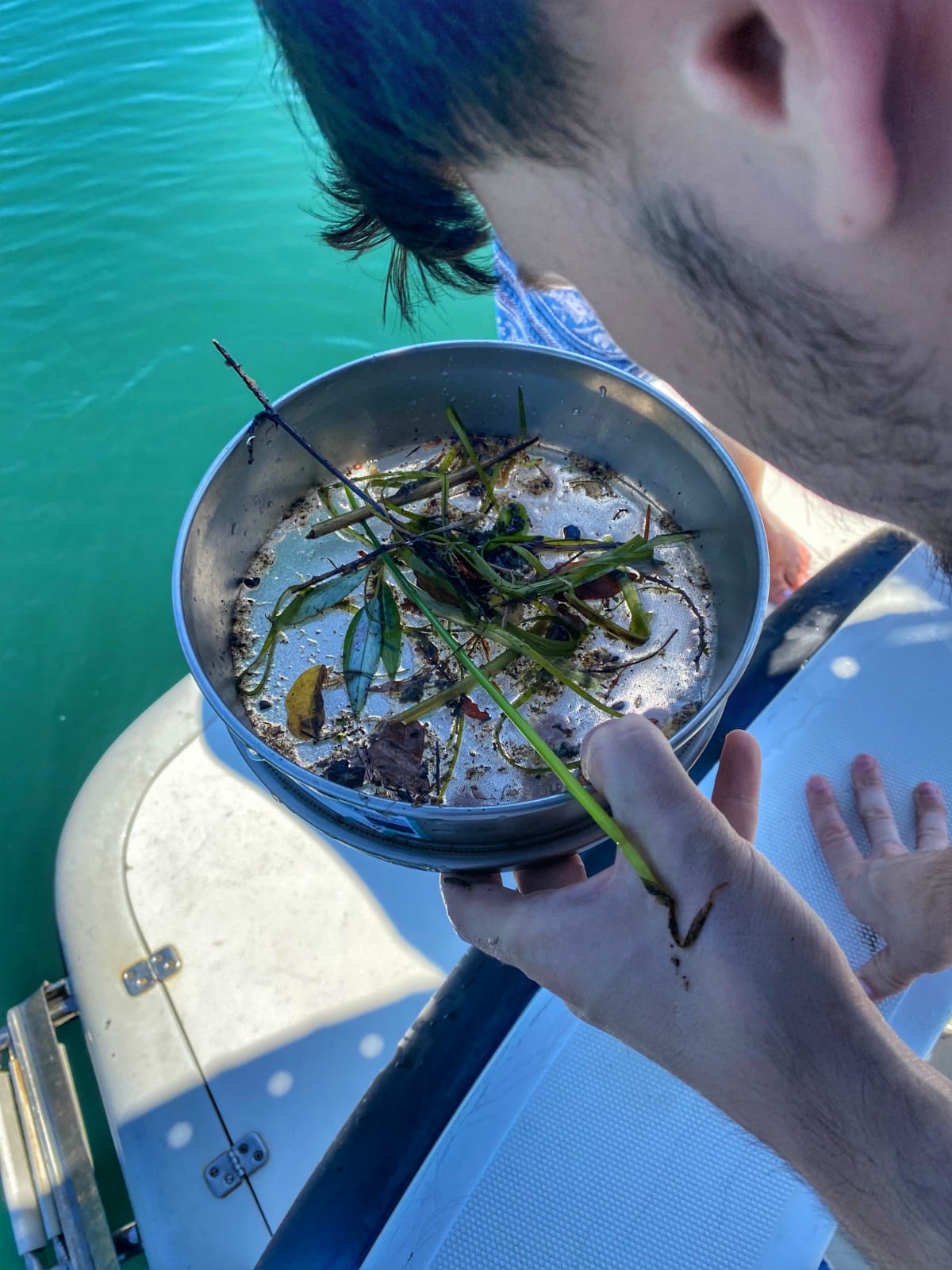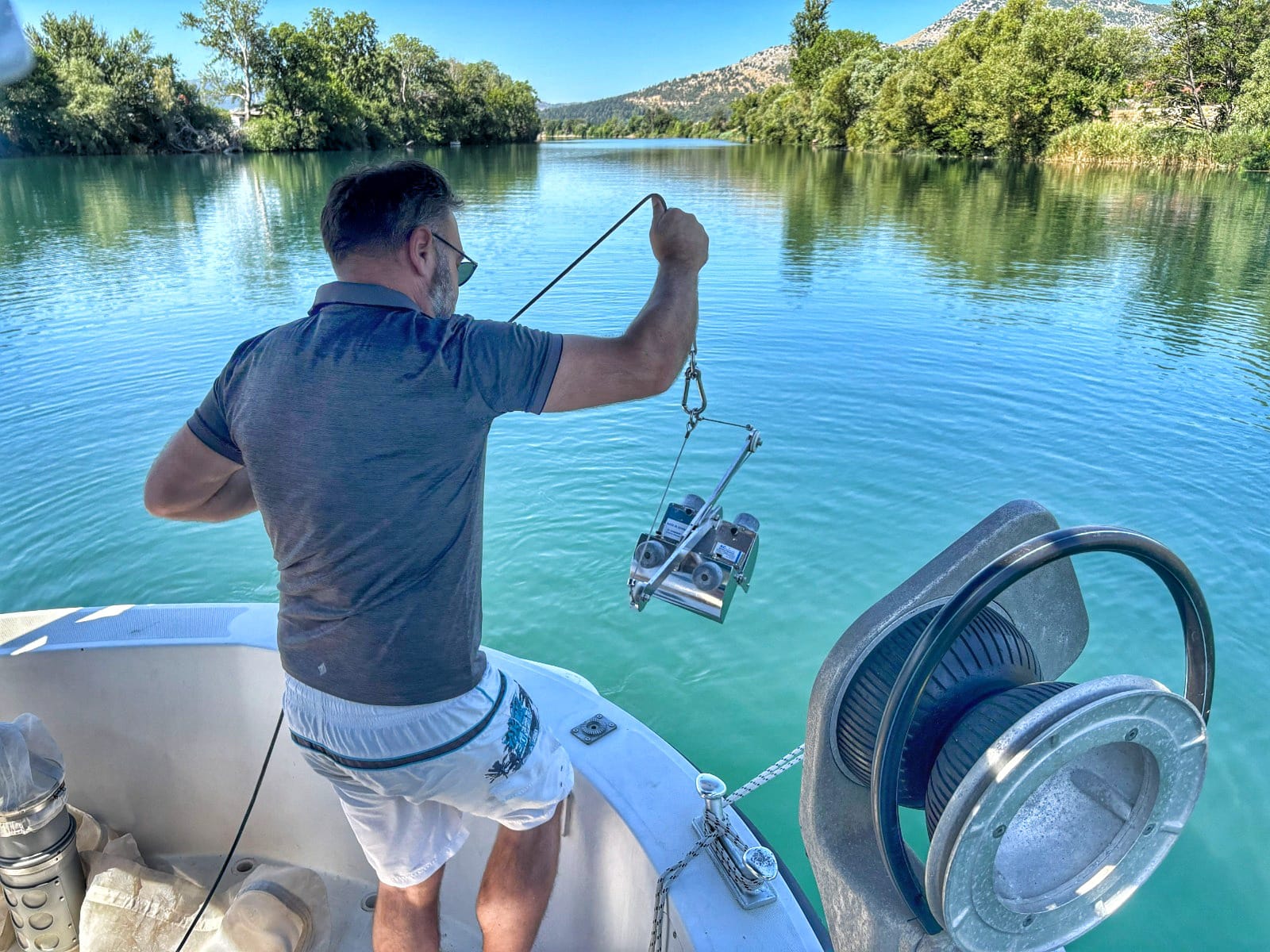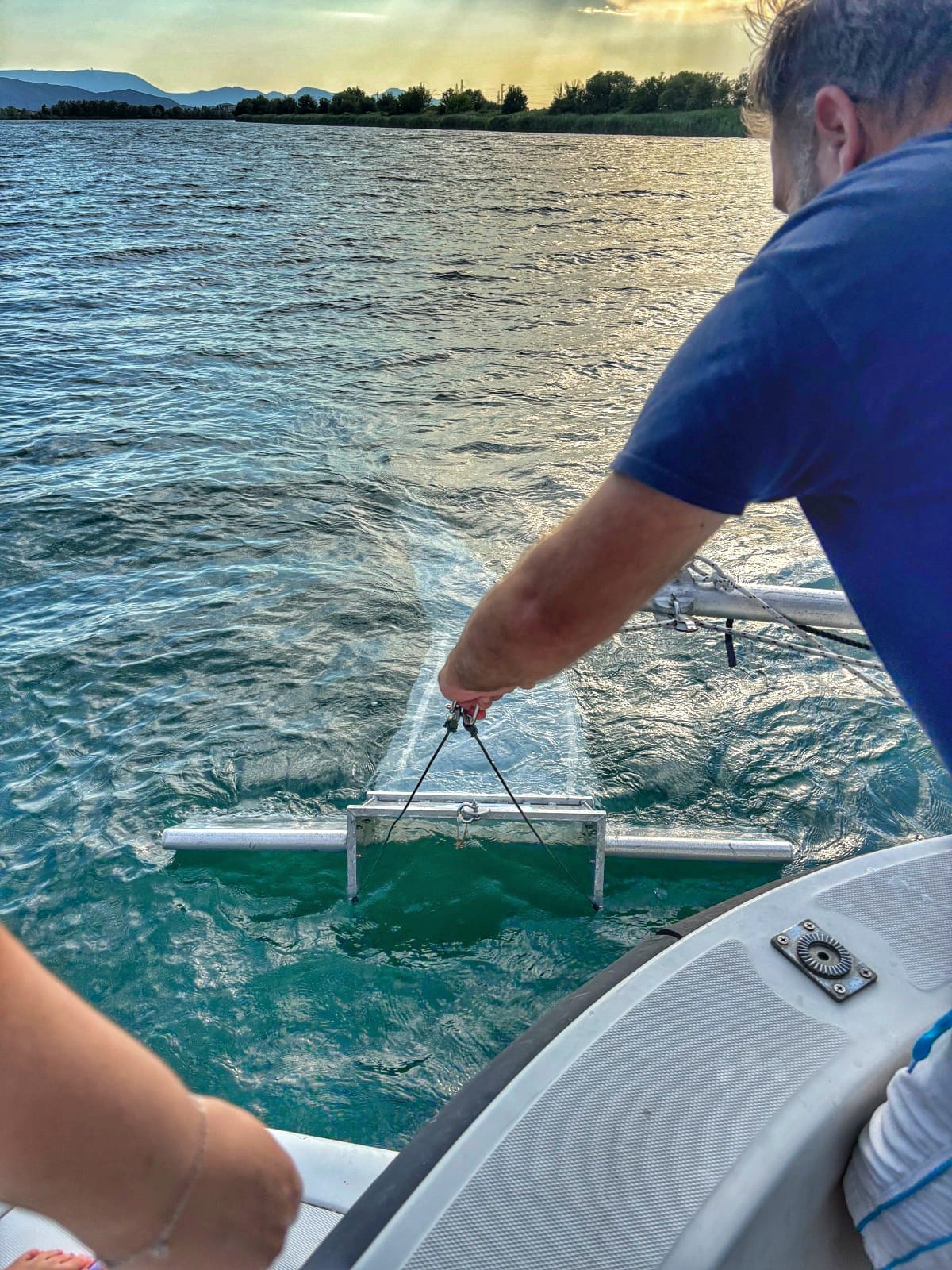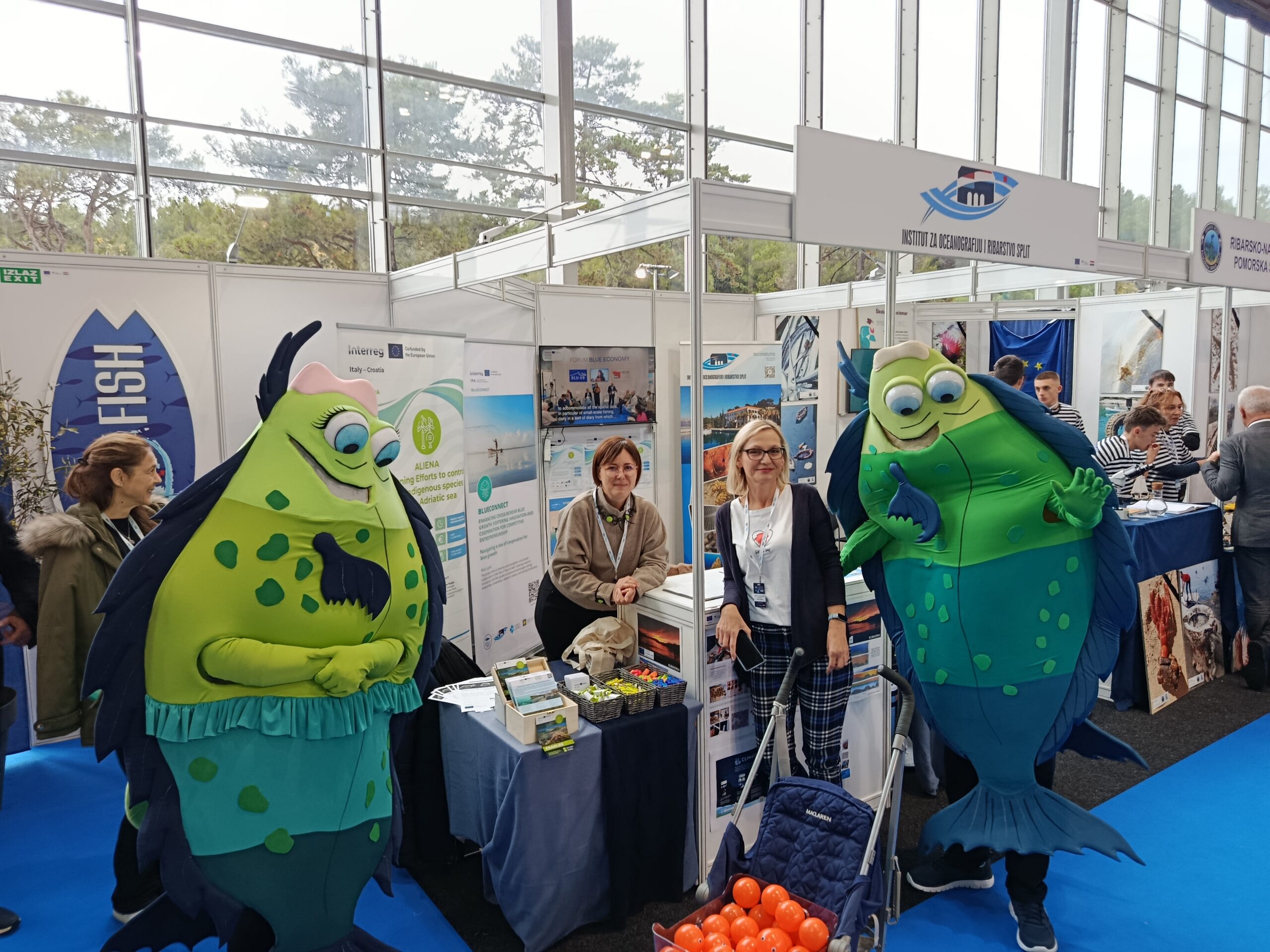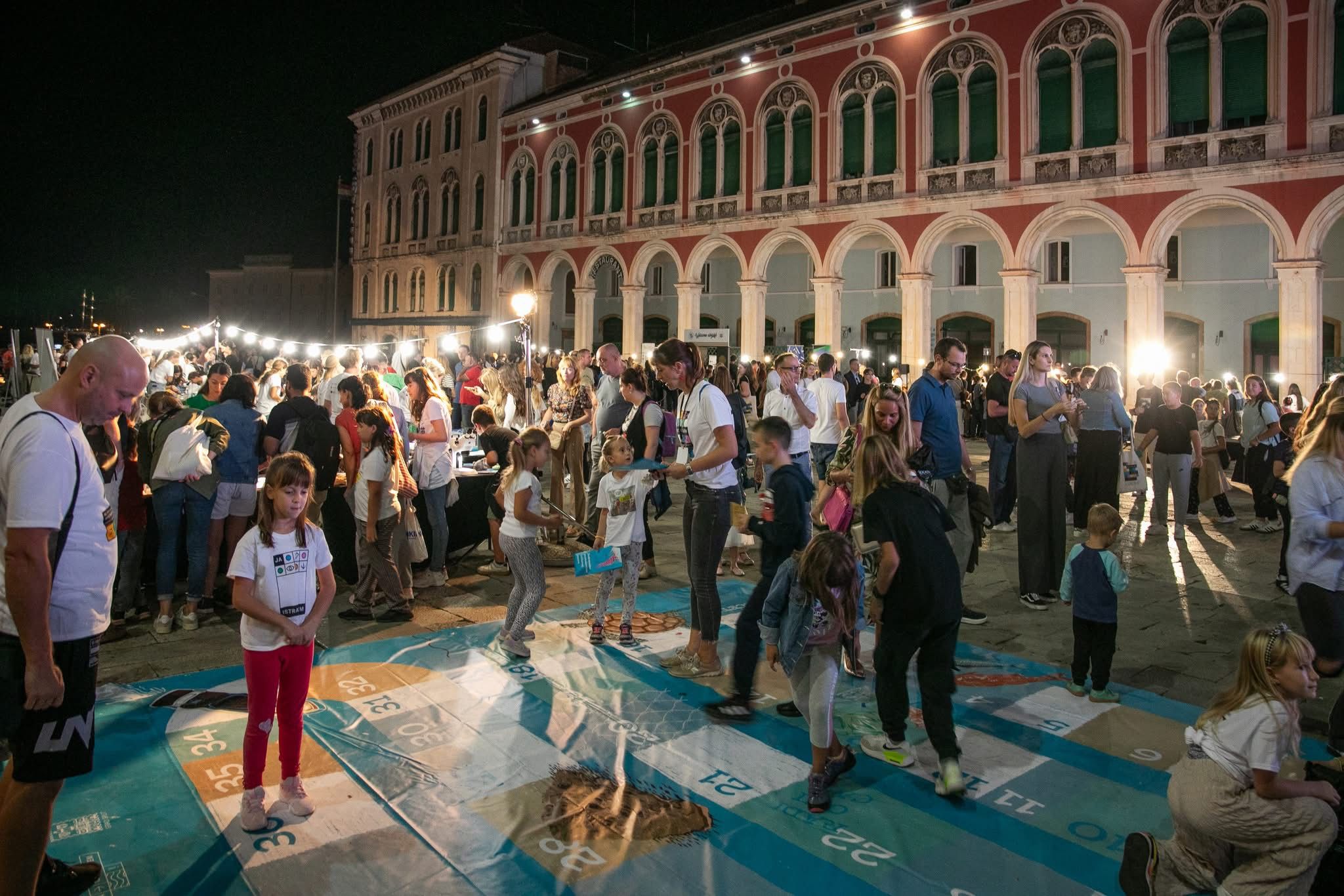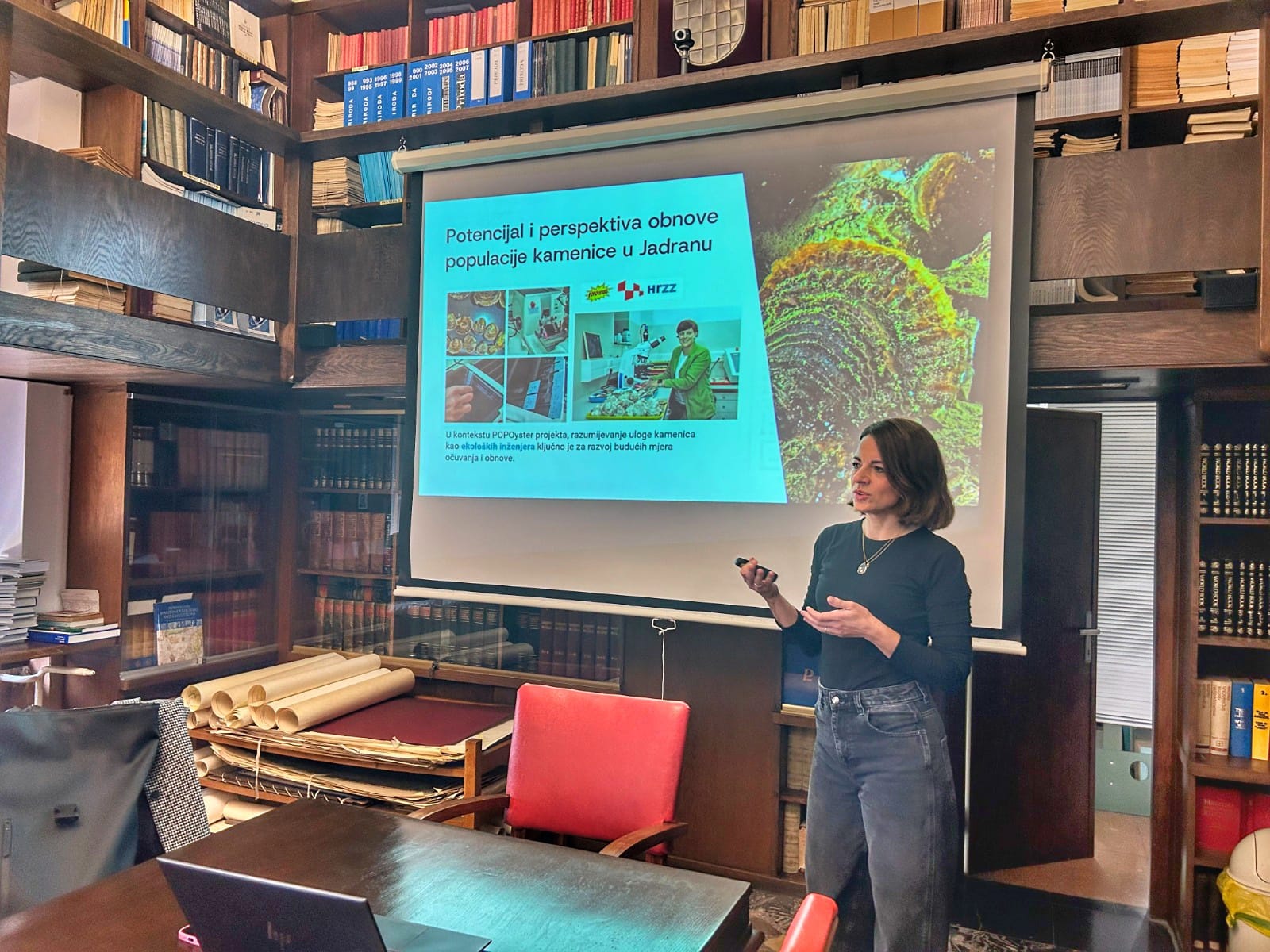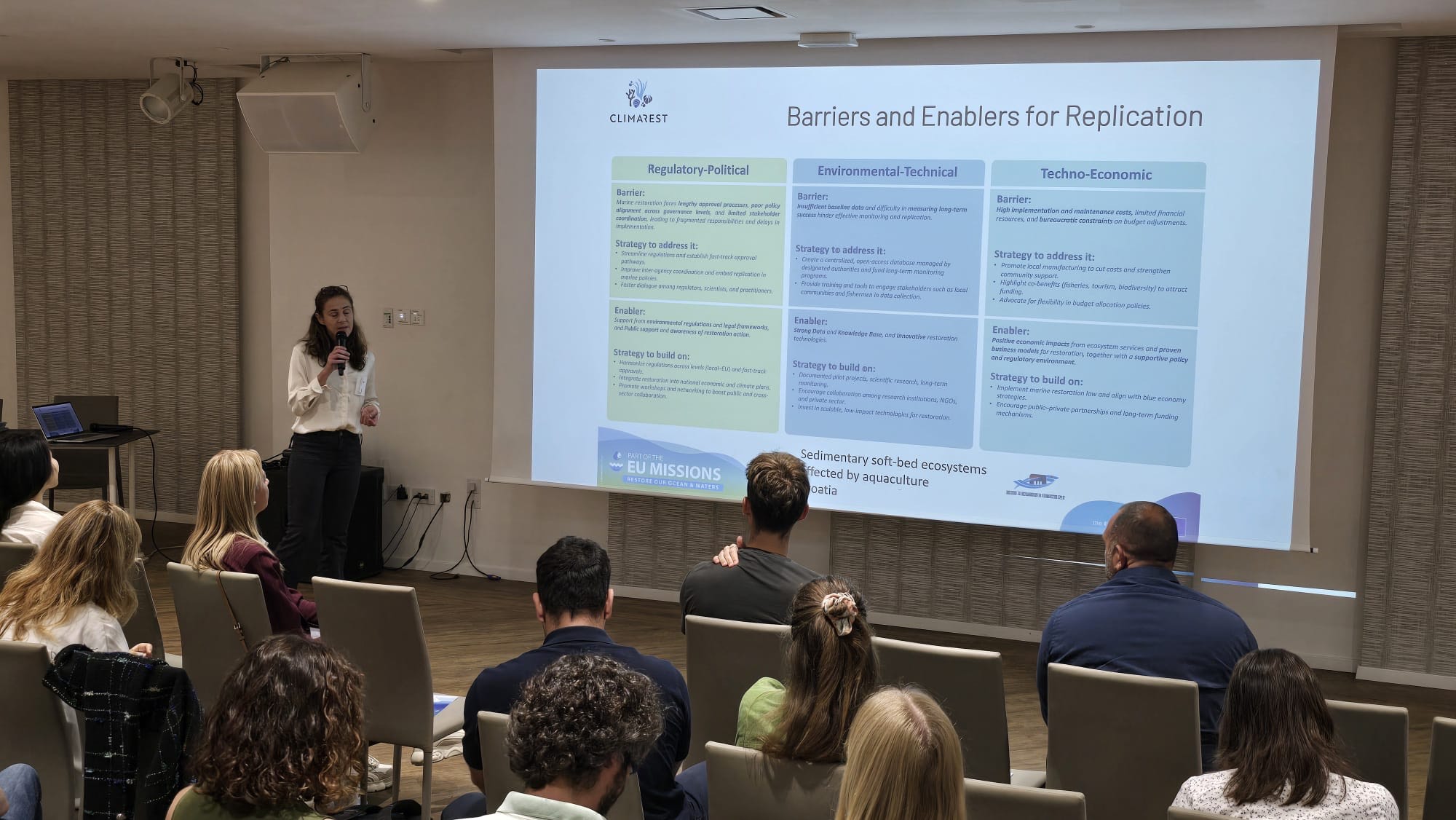As part of the international project TETHYS4ADRION, aimed at reducing the amount of riverine plastic waste in the Adriatic-Ionian region, field activities were carried out on the Neretva River on July 1 and 2, 2025. The Neretva is one of five pilot sites included in the project.
The main goal of the activities was to map land-based sources of waste and identify areas of waste accumulation and retention in the river and along its banks. Observations were conducted continuously, from the river mouth upstream to Metković along one bank, and downstream along the opposite bank. The most commonly recorded items included plastic bottles, bags, food packaging, polystyrene (especially that used for planting), as well as waste from urban and agricultural activities. Most of the waste accumulates in dense patches of sedge and reed, posing a significant threat to ecologically sensitive riverine and wetland habitats.
Additional field research was conducted at five selected locations. A manta net was used to sample microplastics on the river surface, a plankton net was used to collect microplastics from the water column, and a Van Veen grab sampler was used to collect microplastics from riverbed sediment. The research was conducted by experts from the Institute of Oceanography and Fisheries in Split – Dr. Pero Tutman and Dr. Dubravka Bojanić Varezić from the Laboratory of Ichthyology and Coastal Fisheries, and Ante Čović-Stanić from the Laboratory of Chemical Oceanography and Marine Sedimentology, with technical support from Stipe Muslim, who documented the work with a drone, and the boat operator Toni Mašća, aboard the Navicula.
Also participating were representatives of the City of Metković as a project partner, Croatian Waters as an associated partner, and representatives of local civil society organizations from the Neretva delta area, including the youth association Kolektiv and the environmental-diving club Malo more. In addition to field data collection, visual documentation was made using aerial drone footage.
Mapping of pollution sources and waste accumulation areas is also being conducted at other pilot sites: the Isonzo River in Slovenia and Italy, the Buna-Bojana River in Albania and Montenegro, the Reno River in Italy, and the Alfeios River in Greece. All collected data will be entered into a shared database developed within the project, and will serve as a basis for selecting optimal locations for future waste monitoring along these rivers.
